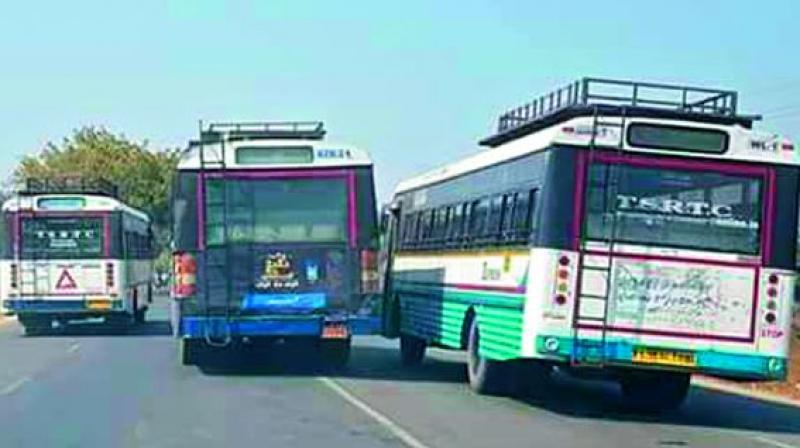Human error, engineering flaws behind recent mishaps
The incident took place when the TSRTC bus was proceeding towards Karimnagar from Huzurabad in the morning.

Hyderabad: Human error, engineering defect and overspeeding can be said to be the main causes behind two major accidents at Rimmanaguda in Siddipet district on Saturday and Manakondur at Karimnagar district on Tuesday, which claimed 21 lives including four at Rimmanaguda and eight at Manakondur travelling in RTC buses. While in the first accident the road median was at a very low height, in the second incident on Karimnagar Warangal highway, there was no median on the road.
In both incidents, RTC buses were travelling rashly and at a high speed, at 80 kmph.
Telangana Road Safety Authority Chairman T Krishna Prasad said that it was high time to revise the speed limit and provide advanced counselling for RTC drivers to control rash driving and overspeeding.
“On the other hand, engineering defects should be corrected and how it can be done is a big challenge to the agencies,” he said.
He added that medians on highways should be at least 18 inches high and 3 metres wide and the median should be covered with bushes or trees which will help minimise the vehicle speed, after it climbs over the median. The kind of plants to be planted on the median should also be carefully planned, which is another big challenge, he said.
At Rimmanaguda, the median separating the lanes was less than nine inches high and one meter wide and as a result, when the truck after being hit by the RTC bus, swerved to the right and hit the median, it easily jumped over to the opposite lane.
“If the median was taller, the vehicle could have slowed down and the casualties could have been less. While at Manakondur, there was no median, which lead to a head on collision.” he said.
While it is clear that the RTC driver was at fault in the Rimmanaguda incident, the mishap could have been averted, if the bus was driven at a minimum speed.

